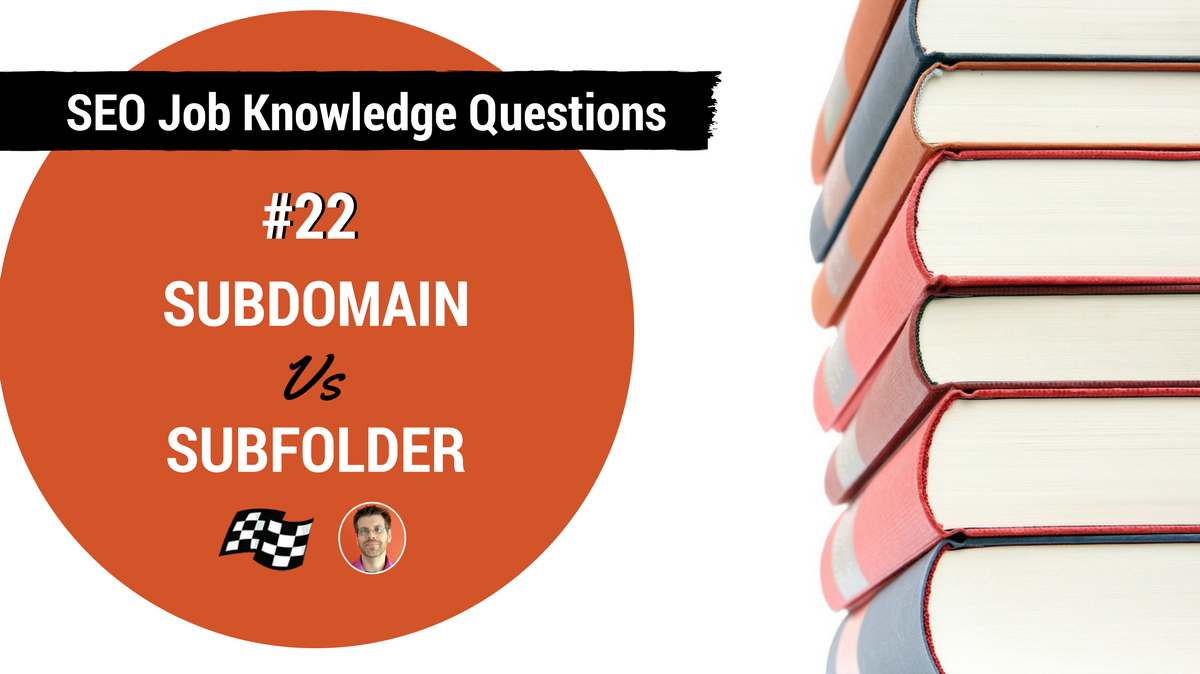What is the difference between a subdomain and a subfolder? How do the search engines value these differently?
SEO job candidates should be able to thoroughly explain the differences between a subdomain and a subfolder. But even more important than that is if they can accurately articulate how search engines treat each of these two options.
Here’s how I would answer:
The differences between a subdomain and subfolder can best be demonstrated by showing. In the examples below, the “sub” stands in for an alternatively named subdomain or folder:
Subdomain: sub.domain.com
Subfolder: domain.com/sub
Generally, subdomains and folders are used to create a subsection of your website. They can be used for the same purposes, but typically a subdomain is used when dividing a website into different properties as The Gap does with their Old Navy and Banana Republic Brands:
oldnavy.gap.com
bananarepublic.gap.com
These two subsites could just as easily have been placed on subfolders:
gap.com/oldnavy
gap.com/bananarepublic
But in this case, it makes sense to give each brand their own domain while harnessing the power of the parent brand. Google does the same with their AdWords brand, but oddly, not with their Analytics brand.
The benefits of using subdomain rather than creating a unique URL (i.e. oldnavy.com or bananarepublic.com, both of which redirect to the subdomains noted above) is that a subdomain gets to harness some of the authority of the main domain. If each of those sites was on its own domain, they would each have to build up authority on their own.
However, if you want to harness the full power of the main domain, you want to go with a subfolder. Where subdomains are treated almost entirely as a unique domain, subfolders get the full benefit of the main domain’s authority. Every link to a page on the main domain benefits the pages in the subfolder, and every link to a page in the subfolder benefits the main domain.
Choosing which option is best for a business, in my mind, comes down to branding. If you want to keep your brands separate, go with a subdomain. But if there is no need to have distinct websites for each property, utilize the power of a sub-folder.

